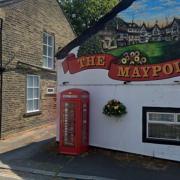Jo Haywood delves into nature's first aid box to find out more about traditional cold remedies
Natural remedies first used hundreds, and in some cases thousands, of years ago appear to be enjoying something of a renaissance as manmade chemicals are replaced by traditional stalwarts like echinacea, peppermint and liquorice.
Allens Healthcare in Huddersfield, a family-run business that has been producing natural cold and cough remedies for more than 30 years, is among the many manufacturers to benefit from the turnaround. Its lozenges recently played a starring role in a prestigious concert alongside X-Factor favourite Jonathan Ansell and Last Choir Standing judge Suzie Digby at Grosvenor Chapel Mayfair
‘They were originally created more than 100 years ago to help Welsh sheep farmers ward off symptoms of coughs and colds,’ said Howard Dixon of Allens Healthcare (www.allenshealthcare.co.uk). ‘They have also been a long-standing favourite with male voice choirs and priests preparing to deliver their Sunday sermon to their congregation.’
The company’s best-selling pine and honey balsam contains a list of natural ingredients such as liquorice, pine oil, anise, capsicum tincture, arrowroot, peppermint and black treacle.‘The ingredients used in our cough lozenges and cough medicines include natural plant and herbal extracts that have been used for centuries to treat a range of winter ills and chills,’ said Howard. ‘Liquorice is used in traditional Chinese medicine to overcome spasmodic coughs and is also a recognised expectorant. And squill oxymell is not as widely known but was first used by Pythagoras to alleviate asthma attacks.’
According to Organic Nutrition (www.organicnutrition.co.uk), a specialist in natural health remedies, the best time to treat a cold is when you don’t have one. In other words, prevention is better than cure.
‘One particular herb, echinacea, has recently had a lot of press coverage and marketing as a “new” cure for colds,’ said a very healthy sounding spokesman. ‘In fact, echinacea isn’t new at all. It has been used by Native Americans for hundreds, perhaps thousands, of years.’
Echinacea works by increasing levels of properdin, a chemical that activates the part of the immune system responsible for fighting virus and bacteria attacks.
‘It’s also an excellent blood cleanser as it helps to sweep dead cells and other debris through the channels of the lymphatic system,’ explained the spokesman.
Other natural remedies enjoying an upturn in demand include:Garlic. This pungent herb has anti-bacterial properties that help the immune system fight infection. It contains several helpful compounds, including allicin, a potent natural antibiotic. If you can’t stomach garlic, try cooking with onions and leeks instead – they taste great and have similar antiviral properties.Ginger. This winter warmer acts as a pain-reliever, antiseptic and antioxidant. It also has a mild sedative effect that will encourage rest. As if all that was not enough, it tastes great in tea, a stir-fry or in a smoothie.Fruit. A zingy combination of orange, pineapple, grapes, banana, pink grapefruit and melon will give the right hit of vitamins to help you fight a cold. Liquorice. Herbalists have been using this sweet treat to soothe chest and throat complaints since the third century BC. It is an expectorant and anti-inflammatory, which means it’s particularly useful for tackling asthma, bronchitis and throat problems. Just don’t be tempted to indulge too much – it has other well-known medicinal qualities that you might want to avoid. Sage. This herb is a long-standing remedy for soothing sore throats and hoarseness, particularly when gargled with apple cider vinegar and honey.Peppermint. This is a valuable expectorant for treating bronchitis, colds and flu, but that is not the end of its talents. It also helps to reduce fevers, is a soothing decongestant and a painkilling balm for headaches.


























